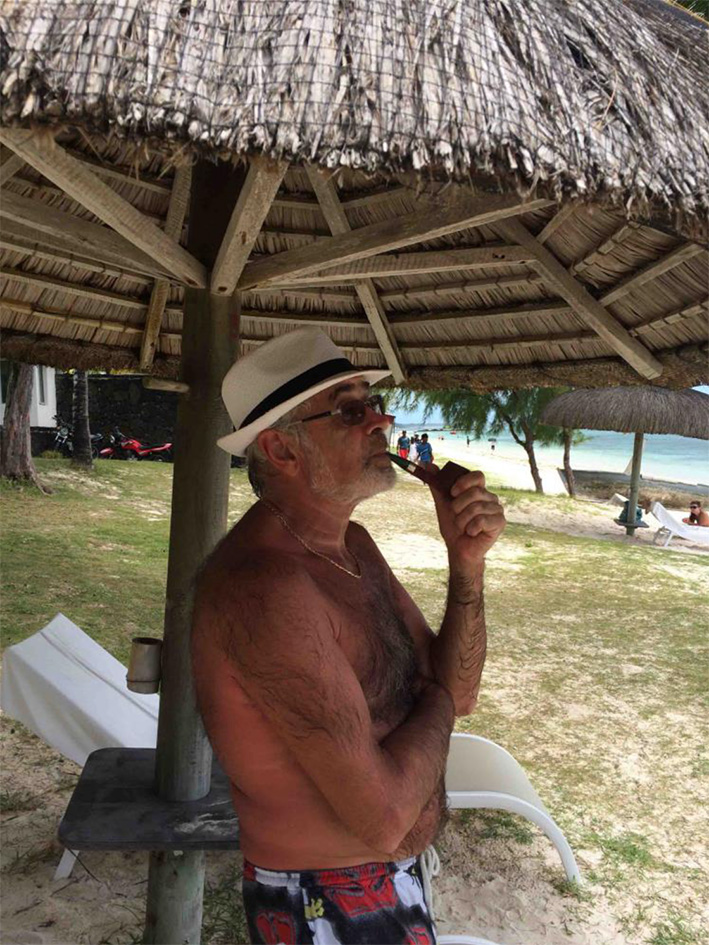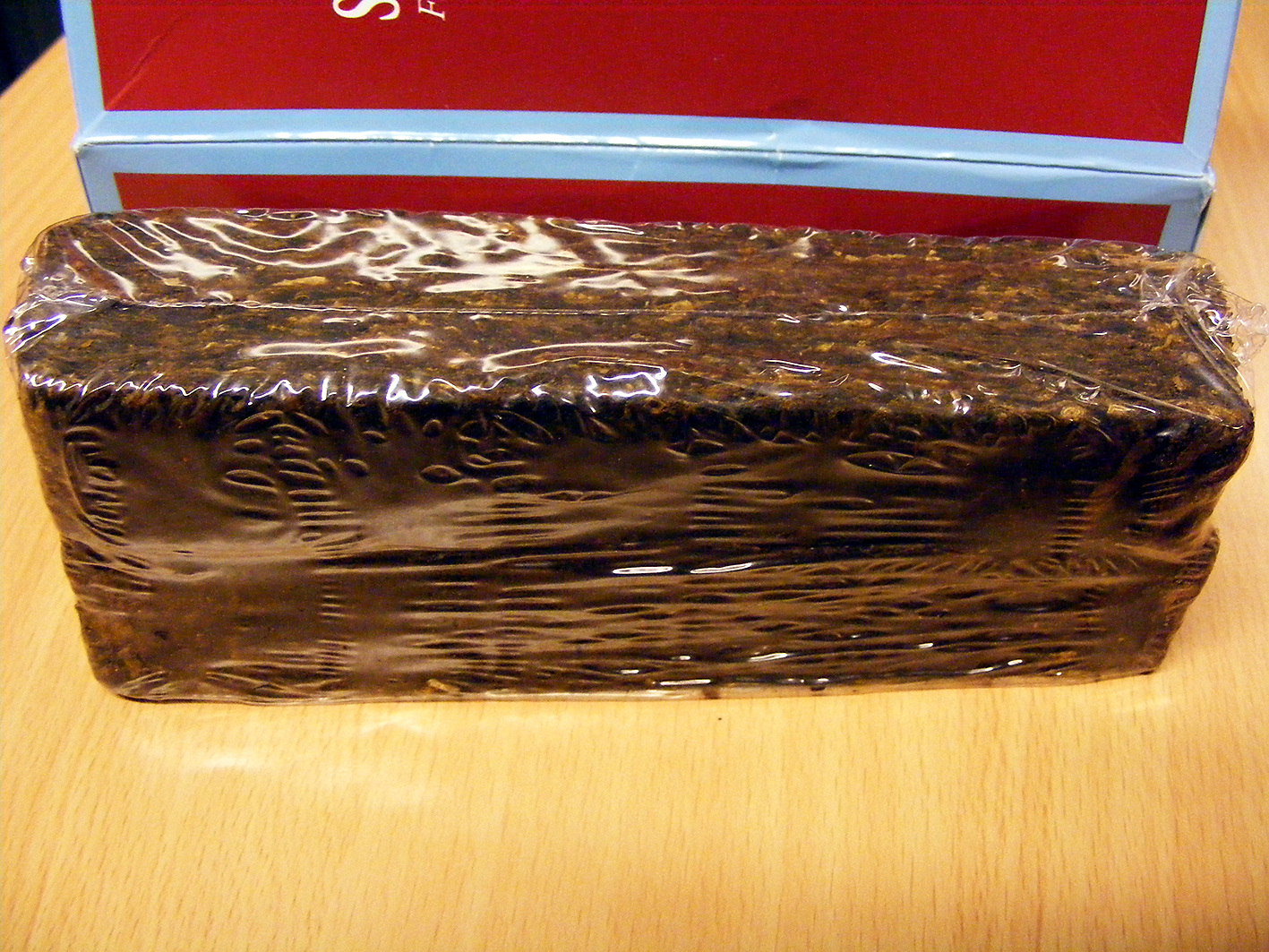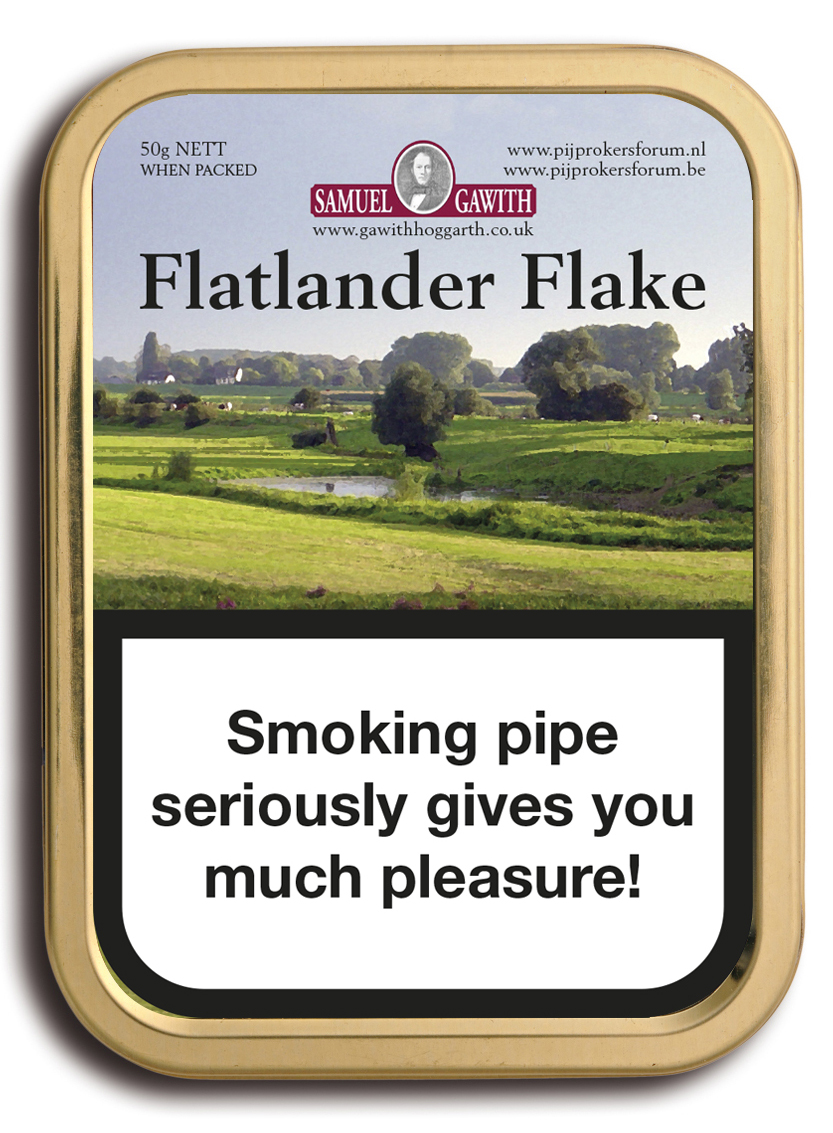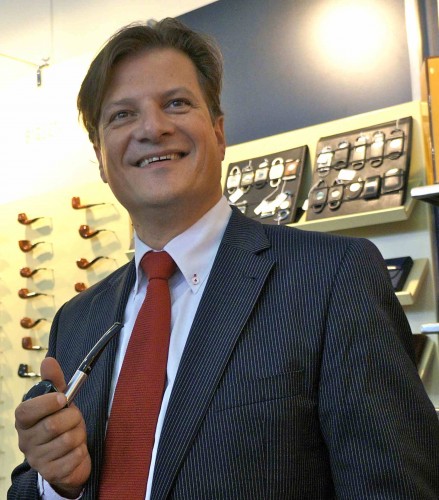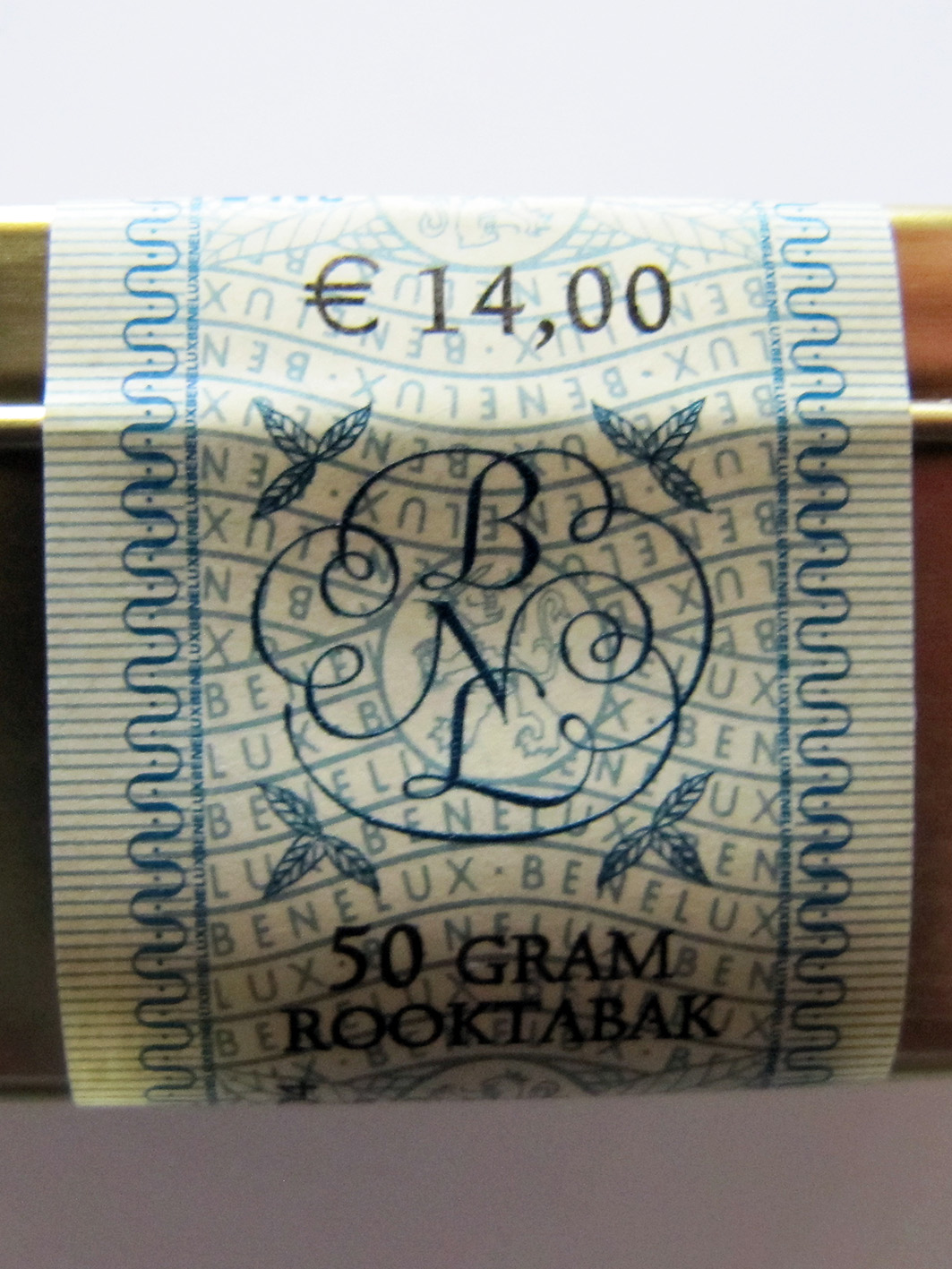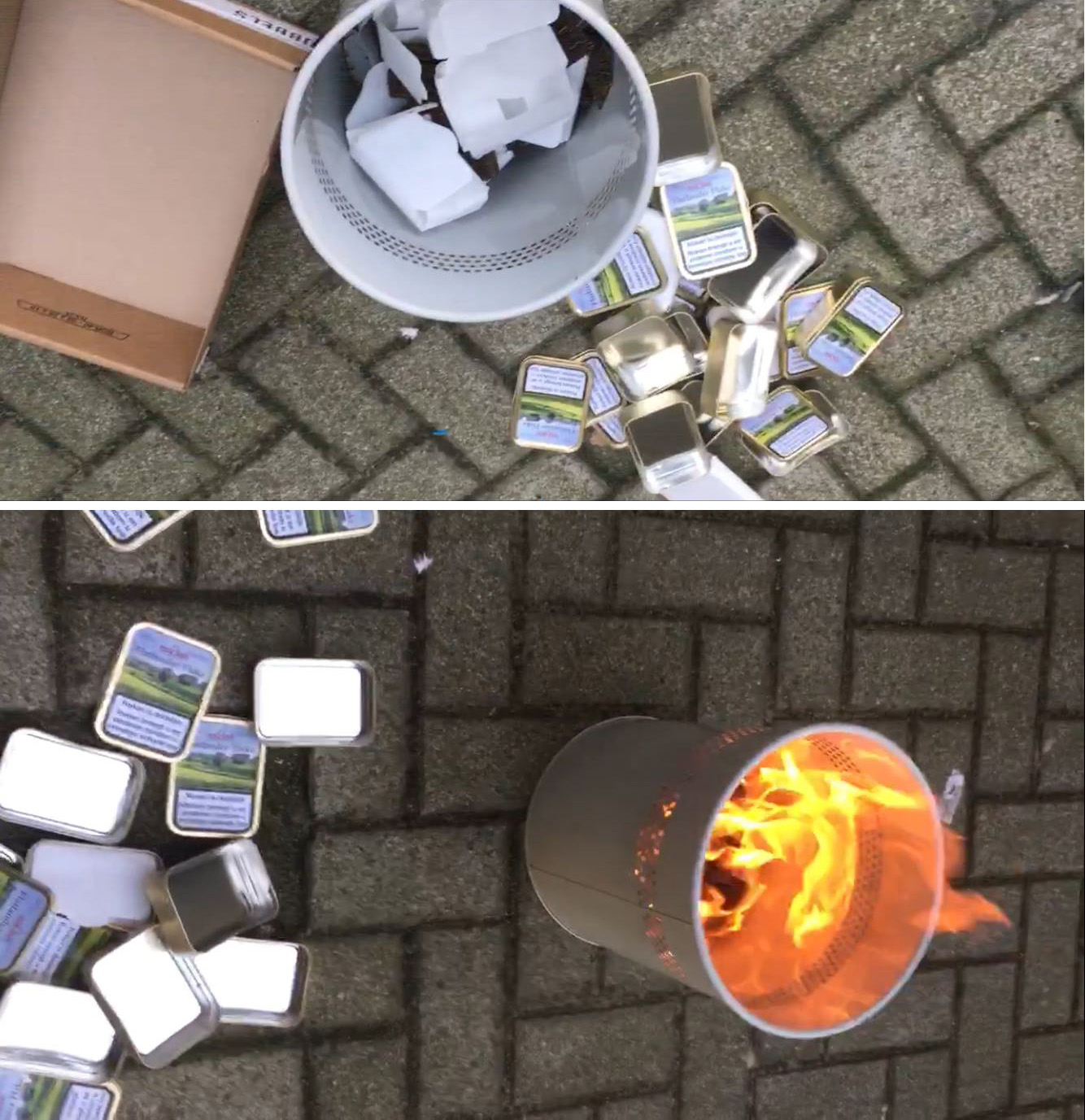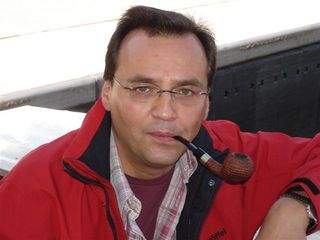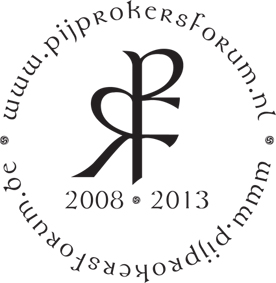In 2012 I started my quest for forum tobaccos. That is, special tobaccos for the Dutch/Belgian Pipe Smokers forum (PRF). That often difficult journey (which you can read about here) ended at the end of 2013 and resulted in 3 delicious tobaccos: an aromatic called Genietmoment, a VaPer named Janneman Flake and a Balkan-blend with the name Brullende Leeuw. All made by a German tobacco company in cooperation with the wonderful Hans Wiedemann from HU Tobacco. After a years rest of the forum tobacco business it started to itch again, I was looking forward to a next phase of the project.
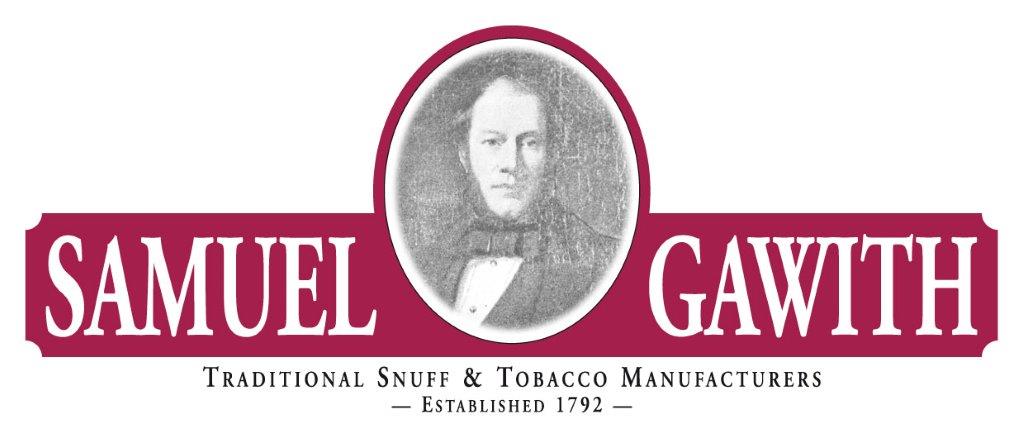 So, from which pipe-tobacco manufacturer would I like a forum tobacco (I already had decided it was going to be only 1 this time).. Sadly not an American company, import-wise that is waaaay to difficult (although I would have LOVED to work together with for example GL Pease, Cornell & Diehl or McClelland). It had to be a European one. On top of my wish-list was the quintessential English tobacco manufacturer Samuel Gawith. But how to get them to participate?
So, from which pipe-tobacco manufacturer would I like a forum tobacco (I already had decided it was going to be only 1 this time).. Sadly not an American company, import-wise that is waaaay to difficult (although I would have LOVED to work together with for example GL Pease, Cornell & Diehl or McClelland). It had to be a European one. On top of my wish-list was the quintessential English tobacco manufacturer Samuel Gawith. But how to get them to participate?
Actually that was pretty easy. Every year on the Inter Tabac fair in Dortmund I encounter the charming Bob Gregory at the stand of Samuel Gawith (merged together (again) with Gawith & Hoggarth in 2015). On the 2015 edition I took the bold step of asking Bob if Gawith was prepared to make a small batch of a special forum tobacco to be made by him and myself. To my surprise Bob immediately said yes, on the condition that the forum members would buy a minimum amount of 200 tins of 50 grams, and gave me his email so I could send him further details. Yessss, step 1 was taken!
Now step 2, getting the tobacco legally in The Netherlands. Gawith did not have a Dutch importer but I knew that someone was very interested in that job: Elbert Gubbels of Gubbels Pipes (Big Ben etc.). After years of being busy with smoking pipes Elbert was looking for a business expansion with pipe-tobacco. Fred and I made sure to let Elbert know that working with a high quality pipe-tobacco manufacturer such as Samuel Gawith was a smart move. He agreed with that and assured us he would talk to Bob about importing Gawith tobaccos to The Netherlands. In short, the next phase of the project could begin!
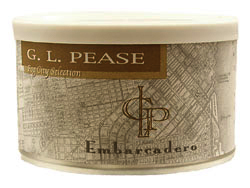 Back home I immediately mailed Bob, I already had an idea in my head of what I wanted. With the last forum tobaccos the high seller was Janneman Fake, a VaPer and a kind of blend that appealed to a lot of forum members. This time I wanted something similar yet different. First the cut, not a flake but a plug which is more special. Further I am a big fan of oriental tobaccos so I thought, Virginia/perique/oriental.. Hmm.. That could work! Also I was inspired by a blogpost by GL Pease about his wonderful Embarcadero blend. There he admits using a pinch of latakia in his Fillmore offering. A trick to extra season a tobacco, the same as someone would season a good steak to make it an excellent one.
Back home I immediately mailed Bob, I already had an idea in my head of what I wanted. With the last forum tobaccos the high seller was Janneman Fake, a VaPer and a kind of blend that appealed to a lot of forum members. This time I wanted something similar yet different. First the cut, not a flake but a plug which is more special. Further I am a big fan of oriental tobaccos so I thought, Virginia/perique/oriental.. Hmm.. That could work! Also I was inspired by a blogpost by GL Pease about his wonderful Embarcadero blend. There he admits using a pinch of latakia in his Fillmore offering. A trick to extra season a tobacco, the same as someone would season a good steak to make it an excellent one.
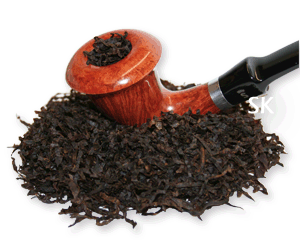 So I wrote to Bob that the ingredients should be Virginias (in the vein of Full Virginia Flake), orientals (sadly Gawith only has an assorted blend of orientals and no specific varieties), a bit of perique, a smidgen of latakia and I told him what, very roughly, the levels of the different tobaccos should be. I was going for a sturdy yet mild, exotic and not overpowering blend with some fine nuances. Now I hear the PRF members saying: “What?? There is latakia in the new forum tobacco?? You said there wasn’t!” True, I lied, I admit and I am sorry. Because some members don’t like latakia I was afraid that they would not buy the tobacco simply because the dark leaf was an ingredient (although used very, very sparsely). So all you latakia haters who now smoke the blend and love it: got ya!
So I wrote to Bob that the ingredients should be Virginias (in the vein of Full Virginia Flake), orientals (sadly Gawith only has an assorted blend of orientals and no specific varieties), a bit of perique, a smidgen of latakia and I told him what, very roughly, the levels of the different tobaccos should be. I was going for a sturdy yet mild, exotic and not overpowering blend with some fine nuances. Now I hear the PRF members saying: “What?? There is latakia in the new forum tobacco?? You said there wasn’t!” True, I lied, I admit and I am sorry. Because some members don’t like latakia I was afraid that they would not buy the tobacco simply because the dark leaf was an ingredient (although used very, very sparsely). So all you latakia haters who now smoke the blend and love it: got ya!
While I was waiting for an answer from Bob I made the list on the forum where everyone could sign up for the tobacco. Remember, we had to order a minimum of 200 tins and I was crossing my fingers to say the least we made it to that amount. I did not need to worry. On 20 September 2015 forum-members could order and on the 25th I already had my 200 tins! In the meantime Bob had been busy with the plug: Dear Arno, this morning we made a trial cake of tobacco. This will be baked tomorrow and then we will test the tobacco for 7 to 10 days. After that time it will be cut and samples sent to you. The 25th I informed him that we managed to cross the 200 tins border. That is very good news Arno. I will now go downstairs to the production area and see what the cake is like. (10 minutes later) Interesting!!! The cake is made and the aroma is intriguing. I have cut a plug and will send to you for your opinion. Please allow it to dry a little as the tobacco is still very young.
On 22 October 2015 a package arrived at the office for me. Hmm, rather large, I thought, can’t be Gawith, such a box for only a sample? But the sender was indeed Gawith and inside was a massive 250 gr. slab of pressed tobacco! Wow! With the previous forum tobacco I only got small sample bags of which I could barely smoke 4 pipes. At least I could provide decent samples for my testers this time. So I cut the tobacco up in smaller pieces and send them to my testing panel, a select group of forum members and friends. Of course I also smoked the plug and to my relief it already was pretty good. In short the testing panel and I came to the conclusion that the plug was ok, the basis was good. So I mailed Bob that the Virginias in combination with the oriental, perique and smidge of latakia were to be found very interesting taste-wise. However, halfway the bowl it seemed that the “middle” taste-tones were lacking a bit. The plug had good “subtones” and “overtones”, but the middle was a bit “empty”, sort of. Like someone of the testers said: neither fish nor fowl. So I suggested an increase of the level of Oriental to Bob to fix this. The perique level was ok but the latakia could be even less. By the way, I did not tell the testing panel it contained latakia but some detected it.
It took some time before Bob responded, on 23 November he send this: Arno, I have noted your comments and will work at it. For now we are extremely busy, so if you do not mind, Arno Plug will have to go on to the back burner. Be assured that I will take a long look in a couple of weeks. About the name “Arno Plug” were some funny comments on the forum, I don’t understand why.. Finally at the beginning of February 2016 the second sample-slab of tobacco arrived at the office. But when I smoked the first pipes I was not happy. I asked Bob to raise the oriental content but now the blend was really lacking midrange taste, my fault. The Virginias no longer supported the oriental so the whole balance was off. From the other hand the perique and latakia content were perfect. Still I did not send this sample round to the testing panel, it was not better as the first one. I mailed Bob my findings and waited again.
 Then it began to rumble about the cut of the forum tobacco. It was going to be a plug but Gawith was slowly beginning to object to this: Regarding the packaging of SG plug, we have one packing for this in the UK and that is a 250g box. Generally speaking, it is very expensive to cut a plug to 50g, it requires constant trimming to size and we end up with excessive waste, the cost of which has to be added back to the end product weight. We can do this in a tin but the price will shock you. Can the product which you require not be taken in the standard 250g box? It would certainly have a more attractive price for you. You could of course also take the product as a bulk product and pack it yourselves. I told Bob that we could not take the standard 250 gr. box or the tobacco as bulk. This because in The Netherlands no sales of bulk tobacco is allowed, only sealed tins and pouches are permitted. On 8 March the final verdict fell: Dear Arno, with regard to the Forum tobacco, we are not prepared, on the basis of time/cost to pack this product as a 50g Plug. We are, however, prepared to go with a 50g flake product.
Then it began to rumble about the cut of the forum tobacco. It was going to be a plug but Gawith was slowly beginning to object to this: Regarding the packaging of SG plug, we have one packing for this in the UK and that is a 250g box. Generally speaking, it is very expensive to cut a plug to 50g, it requires constant trimming to size and we end up with excessive waste, the cost of which has to be added back to the end product weight. We can do this in a tin but the price will shock you. Can the product which you require not be taken in the standard 250g box? It would certainly have a more attractive price for you. You could of course also take the product as a bulk product and pack it yourselves. I told Bob that we could not take the standard 250 gr. box or the tobacco as bulk. This because in The Netherlands no sales of bulk tobacco is allowed, only sealed tins and pouches are permitted. On 8 March the final verdict fell: Dear Arno, with regard to the Forum tobacco, we are not prepared, on the basis of time/cost to pack this product as a 50g Plug. We are, however, prepared to go with a 50g flake product.
Damnit! I already “sold” over 200 tins as a plug and now it suddenly was going to be a flake. I explained the situation to the forum members and asked them if they were willing to accept the new cut. Luckily the most heard response was: “A plug is more special but a flake is also ok, easier to handle”. *Pheww*! Only 1 member wanted to cancel his order because of this. The new flake also needed a name so I asked the forum members for suggestions. The best came from Jef (nickname NoneNicer): Flatlander Flake. He was inspired by the book “Flatland, a romance of many dimensions” written by Edwin A. Abott. The book is about dimensions and we just went from 3D (a plug) to 2D (a flake), very appropriate. Plus that when I read the name I immediately got inspiration for the tin artwork. I asked Bob what the dimensions of the label were and started to work. I ended up with a picture of the flat lands around the village where I live. With some Photoshop I made it look like a painting. I added the Samuel Gawith logo, some info, of course the name, send it to Bob et voilà, I was ready.
 Bob still had not send a reply but after some pushing from my side he finally did on 4 April: Dear Arno, I have no news as yet. I have to wait until Mr Gubbels enters into an agreement with Gawith Hoggarth. Until this happens I cannot make or ship. This may not happen until after May 20th in which case I may have wasted money on labels we cannot use. Until I know what the market is doing I will not move. I know this is frustrating but the problem is small compared to our having to change label designs and health warnings for all EU markets, also to possibly change the type of tin we use. The problem at which Bob was pointing was the new tobacco regulation guideline TPD2. That required that Flatlander Flake had to be produced before 20 May 2016 otherwise we 1. could throw away the labels that were just made and 2. horrible pictures would be put on the tins. Luckily a couple of weeks later Elbert Gubbels committed himself to Gawith. He was going to import several Samuel Gawith tobacco to The Netherlands including Flatlander Flake. But our troubles were not over yet.
Bob still had not send a reply but after some pushing from my side he finally did on 4 April: Dear Arno, I have no news as yet. I have to wait until Mr Gubbels enters into an agreement with Gawith Hoggarth. Until this happens I cannot make or ship. This may not happen until after May 20th in which case I may have wasted money on labels we cannot use. Until I know what the market is doing I will not move. I know this is frustrating but the problem is small compared to our having to change label designs and health warnings for all EU markets, also to possibly change the type of tin we use. The problem at which Bob was pointing was the new tobacco regulation guideline TPD2. That required that Flatlander Flake had to be produced before 20 May 2016 otherwise we 1. could throw away the labels that were just made and 2. horrible pictures would be put on the tins. Luckily a couple of weeks later Elbert Gubbels committed himself to Gawith. He was going to import several Samuel Gawith tobacco to The Netherlands including Flatlander Flake. But our troubles were not over yet.
A silence fell until 10 June when Elbert mailed me: Dear Arno, an update regarding tobaccos from England: I have just been in contact with Bob Gregory and an appointment is scheduled in Kendal. After much hassle we finally have the permit to buy tax seals. We hope to be able to import tins with no unsightly pictures on front and back. Regarding the status of your forum tobacco order: this will at least have to get the ugly pictures because the tobacco is not yet manufactured / packaged. All tobaccos produced after May 20 this year are obliged to get the pictures on the cans. It all goes not smooth. Of course there is the fact that we have received permission / a license so late. Bummer, artwork with nasty pictures.. “Oh well, at least a forum tobacco is coming!” I thought.
The next months Elbert got busy with the whole process of importing the Gawith tobaccos. Which was hell for him. This because it was the first time he did anything like that. Only a few companies import tobacco into The Netherlands so there was no one who told Elbert what to do, he had to find out everything by himself. You have meet all kinds of bureaucratic requirements and every time Elbert thought he saw the light at the end of the tunnel our dutiful civil servants conjured up another wall. Very frustrating so I have nothing than the utmost respect for the man because he stubbornly kept going on. In the mean time I discussed the final number of Flatlander Flake with Elbert, he would import 300 tins.
Things started to move again when Bob asked for the Flatlander Flake artwork, again, at the beginning of August. A good opportunity to ask for the 3rd sample round but I got no response. Halfway September was the Inter-Tabac Fair in Dortmund so I mailed Bob several times and begged him to bring new Flatlander Flake samples, again no response. As you can read in the corresponding blogpost the bastard (love you Bob!) did bring 2 tins of the final product with him (No more sample rounds, he said..). I noticed the content of the tin I opened was still very fresh but I tasted potential! I have to reluctantly admit I could hug the man at that moment. In October one of the big PRF meetings was held in Heukelum and only just before the date I received 2 sample-tins from Elbert, with the new artwork. To my amazement and delight it did not have the gruesome images, only text warnings. How they did it, no idea, but to be honest I don’t care.
Slowly the date that the forum tobaccos arrived in The Netherlands was getting closer. Tobacconist Willem Schimmel in Zutphen was doing the sales, as an importer Elbert Gubbels could not do that. At the beginning of December Willem rang me up: “I received the tins, but there are only 288 of them..” What!!?? I ordered and “sold” 300 so I was 12 tins short. I phoned Elbert to asked what happened. Apparently he had send the mandatory tax seals to Gawith so they could attach them to the tins. Only, those seals come on rollers of 144 pieces. So 2 rollers of in total 288 tax seals were received and processed by Gawith. The 12 remaining tins they had send to The Netherlands without anything on them. Which was discovered by our hard working customs office.
They phoned Elbert and he went like “Oh sorry, perhaps I can pay the taxes for them now? I mean, it is only 12 tins.” At which the customs office burst out in anger and even threatened to call the police on Elbert.. In the end he was forced to burn those 12 tins in front of 2 customs officers who especially had to come to the Gubbels factory, I kid you not ladies and gentlemen, I have photographic proof of that. Totally insane, like those tins contained hard drugs! Luckily Gawith had some leftover stock of Flatlander Flake. Just before Christmas Willem organized 3 days on which the members of the forum could pick up their forum tobacco tins and the rest would be send by post. I was there on one of those days and the ambience was just great: happy forum members, Willem played the role of gracious host, there was a cosy Christmas market in the centre of Zutphen, finally all was well.
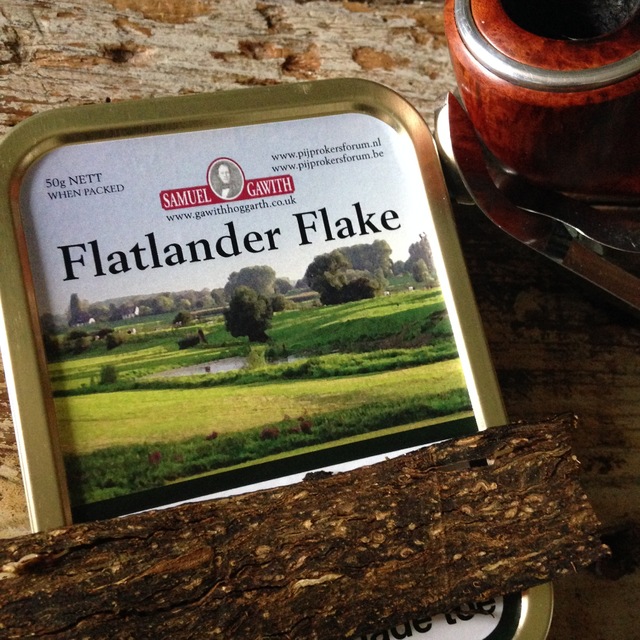 So now you probably all expect a glowing review by me about Flatlander Flake. Well, in The Netherlands we have a saying: “Wij van WC eend adviseren WC eend. (We from Toilet-Duck (a company) advise Toilet-Duck)” We Dutch use the slogan any time people or companies are clearly recommending their own stuff. I won’t do that, the lucky ones who have obtained a Flatlander Flake tin have to make a judgement for themselves. I can only say that I am very happy with the final result, I think it is a unique flake, especially within the Gawith range. It is interesting, smooth and mellow with grassy, sweet candy-cane-like tones yet the perique gives it some peppery kick which is rounded off by a slight smoky after-taste by the pinch of latakia. You can smoke it in all kinds of pipes where the shape of the bowl defines which ingredient comes out more. For example billiards enhance the Virginias and pots/princes the oriental content. However I do advise to smoke slowly, almost sip it. If you have the patience to leave the tin shut I predict you will be in for a treat after some time. Virginias and orientals age very well.
So now you probably all expect a glowing review by me about Flatlander Flake. Well, in The Netherlands we have a saying: “Wij van WC eend adviseren WC eend. (We from Toilet-Duck (a company) advise Toilet-Duck)” We Dutch use the slogan any time people or companies are clearly recommending their own stuff. I won’t do that, the lucky ones who have obtained a Flatlander Flake tin have to make a judgement for themselves. I can only say that I am very happy with the final result, I think it is a unique flake, especially within the Gawith range. It is interesting, smooth and mellow with grassy, sweet candy-cane-like tones yet the perique gives it some peppery kick which is rounded off by a slight smoky after-taste by the pinch of latakia. You can smoke it in all kinds of pipes where the shape of the bowl defines which ingredient comes out more. For example billiards enhance the Virginias and pots/princes the oriental content. However I do advise to smoke slowly, almost sip it. If you have the patience to leave the tin shut I predict you will be in for a treat after some time. Virginias and orientals age very well.
I would like to thank Bob Gregory, Elbert Gubbels and Willem Schimmel, without them Flatlander Flake would not have been possible. Also I thank my girlfriend Ellen for enduring my moods and billows of smoke. And of course I thank all of you forum members who have bought the tins (sometimes vast amounts!) without knowing what the final product was going to be like. Thank you for having faith in me!

